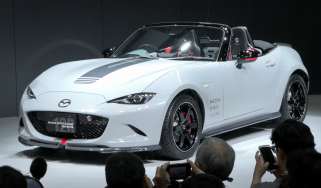The WRC years: the birth of quattro
We discover how Audi pushed the limits to develop quattro four-wheel drive for huge rallying and commercial success
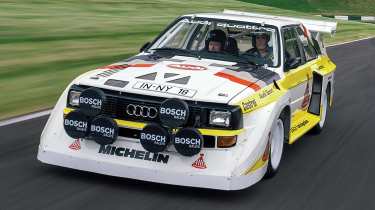
It's a well told story, but not without good reason. Before the Audi quattro, four-wheel drive was for farmers. After it, to turn up to a rally without four driven wheels was to admit defeat even before the flag had fallen to commence the opening stage. When Audi introduced the quattro for the first round of the 1981 World Rally Championship, at the Monte Carlo rally no less, it not only began a new era for itself as a company, but also for the world of performance cars and the sport of rallying.
A four-wheel-drive Audi road car was originally proposed by engineer Jörg Bensinger in the late 1970s, during development of the IItis military vehicle for Volkswagen. The idea was enthusiastically championed by newly appointed Audi boss Ferdinand Piëch as a way of establishing the marque alongside tough German opposition in the market – the original Vorsprung durch Technik. WRC regulations of the time forbade the use of four-wheel drive, but when the other participating manufacturers agreed to relax those rules they had no idea that Audi had been working away behind the scenes on a muscular, turbocharged, four-wheel-drive super-coupe.
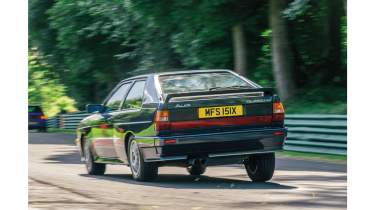
The resulting Audi quattro – known as the Ur-quattro, ‘Ur’ being ‘original’ in German – was unveiled at the 1980 Geneva motor show, ahead of the model’s debut for the 1981 rally season. Originally conceived as a true ‘homologation special’, demand soon evolved it into a flagship of the Audi range, and it would eventually be on sale for 11 years, selling over 11,000 units.
The quattro was unique. It combined the sleek lines of the 80-based GT coupe with 2.1-litre five-cylinder turbo power and the new four-wheel-drive system, all topped off with blistered wheelarches, a deep front air dam and a boxy rear wing. With 197bhp and superb traction, it brought a new level of all-weather performance to road cars. To drive one today, like this very early Helios Blue Metallic 10-valve example from 1982, is a revelation. The engine has that wonderful off-beat signature sound and pulls very lustily in the mid-range, imparting a surprising sense of speed. It’s not as understeer-prone as you might fear, instead majoring on traction with surprisingly deft steering. It still feels capable; over 40 years ago it must have felt ballistic.
Not only was Audi prepared to push the limits and go its own way on the technical front, it also blazed a trail with its driving squad, not only recruiting established star Hannu Mikkola, but then teaming him with Michèle Mouton and co-driver Fabrizia Pons as an all-female crew for the second entry. Three victories were recorded in that debut season (two for Mikkola, one to Mouton), but it was Mouton who would so nearly capture the championship the following season, just losing out to Opel’s Walter Röhrl.
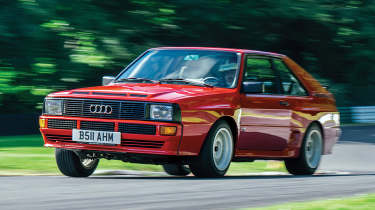
For 1983, Audi homologated into the new Group B formula, renaming the rally car the quattro A1. This was replaced by the A2 later the same season, a marginally smaller engine displacement on the revised road car meaning that Audi could enter the rally version in a lower weight category. The A2 enabled Mikkola to become World Champion after a tense battle with the works Lancia squad. Audi followed up its triumph with another driver’s crown in 1984, this time with Stig Blomqvist at the wheel, but by now the A2 was showing its age in a field that consisted of purpose-built supercars. Something new from Ingolstadt was needed.
Revolution came in the form of the Sport quattro, one of the most extreme homologation specials ever created. The aim was to make the quattro more agile on the stages, for Piëch insisted that Audi stick with a production-based entry. Some 32cm was chopped from the wheelbase, producing the truncated, hugely potent-looking beast you see here in Tornado Red. With 302bhp courtesy of a bigger turbo and a new 20-valve engine it was surely one of the quickest vehicles on the road in 1984 – and it still feels mightily rapid now. In rallying trim, the Sport was soon offering 500bhp, but while its power was exceptional, it was always something of a blunt instrument. To unlock its potential, Audi Sport went radical – so radical that it created one of the most unique, terrifying and beloved competition vehicles ever seen: the Sport quattro S1 E2.
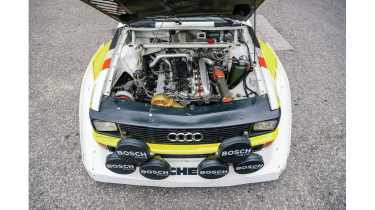
No one really knows how much power the E2 made, but even today at Cadwell Park, on its lowest boost setting, it should be 500bhp, which in a car that weighs not much over a ton feels utterly outrageous. By moving some of the weight rearwards, and embracing aerodynamics, Audi Sport moved back to the front of Group B rallying, famously winning the 1985 San Remo round with Walter Röhrl and co-driver Christian Geistdörfer. What an honour even to sit in this driving seat, yet alone to run the engine to 9000rpm, the scream of the five-cylinder engine and urgent surge of acceleration leaving me completely frazzled after just a handful of laps.
There will never be another car like this, but for Audi Sport, one era was closing and another opportunity beckoned: next, it would hit the track.

